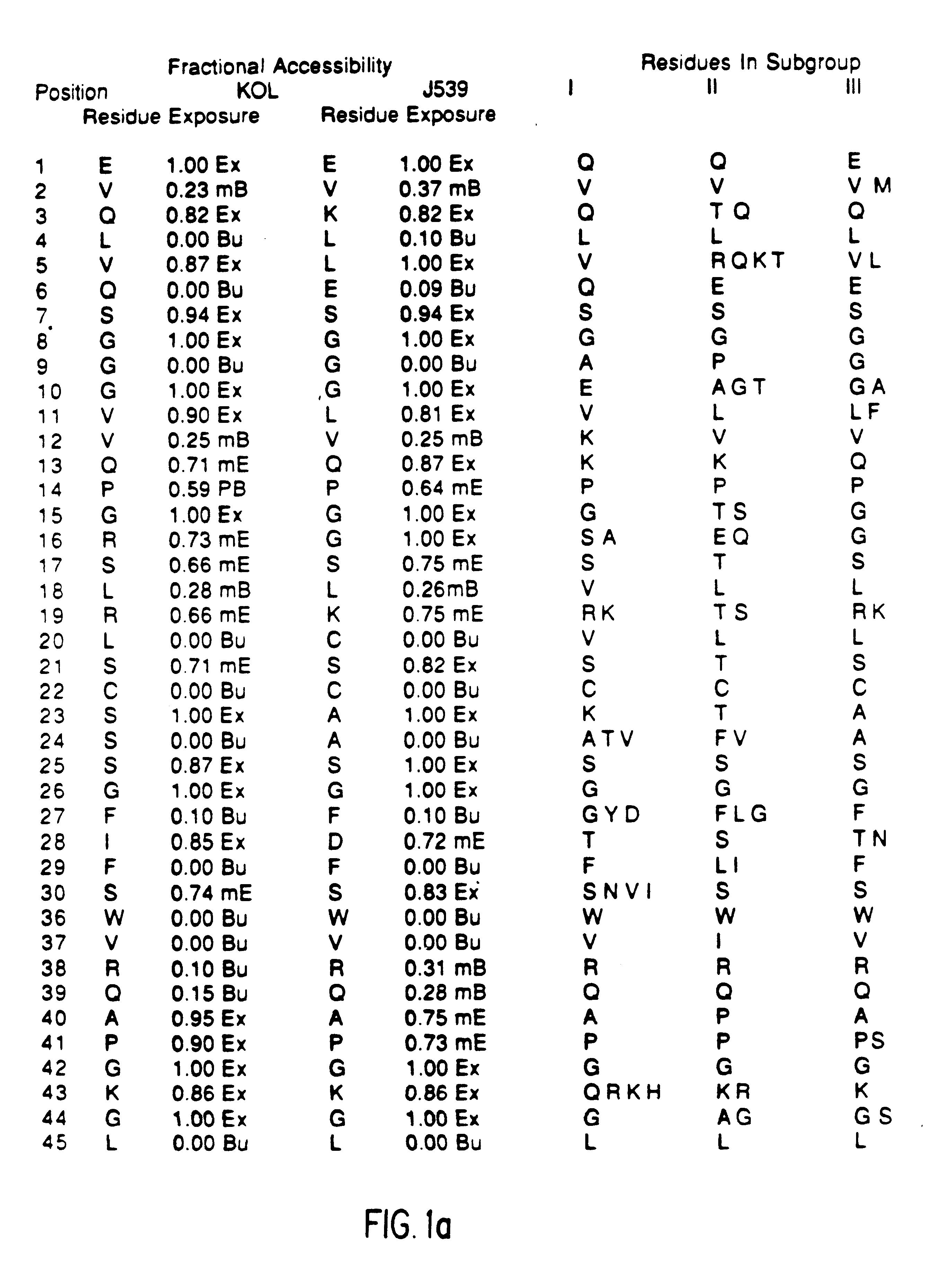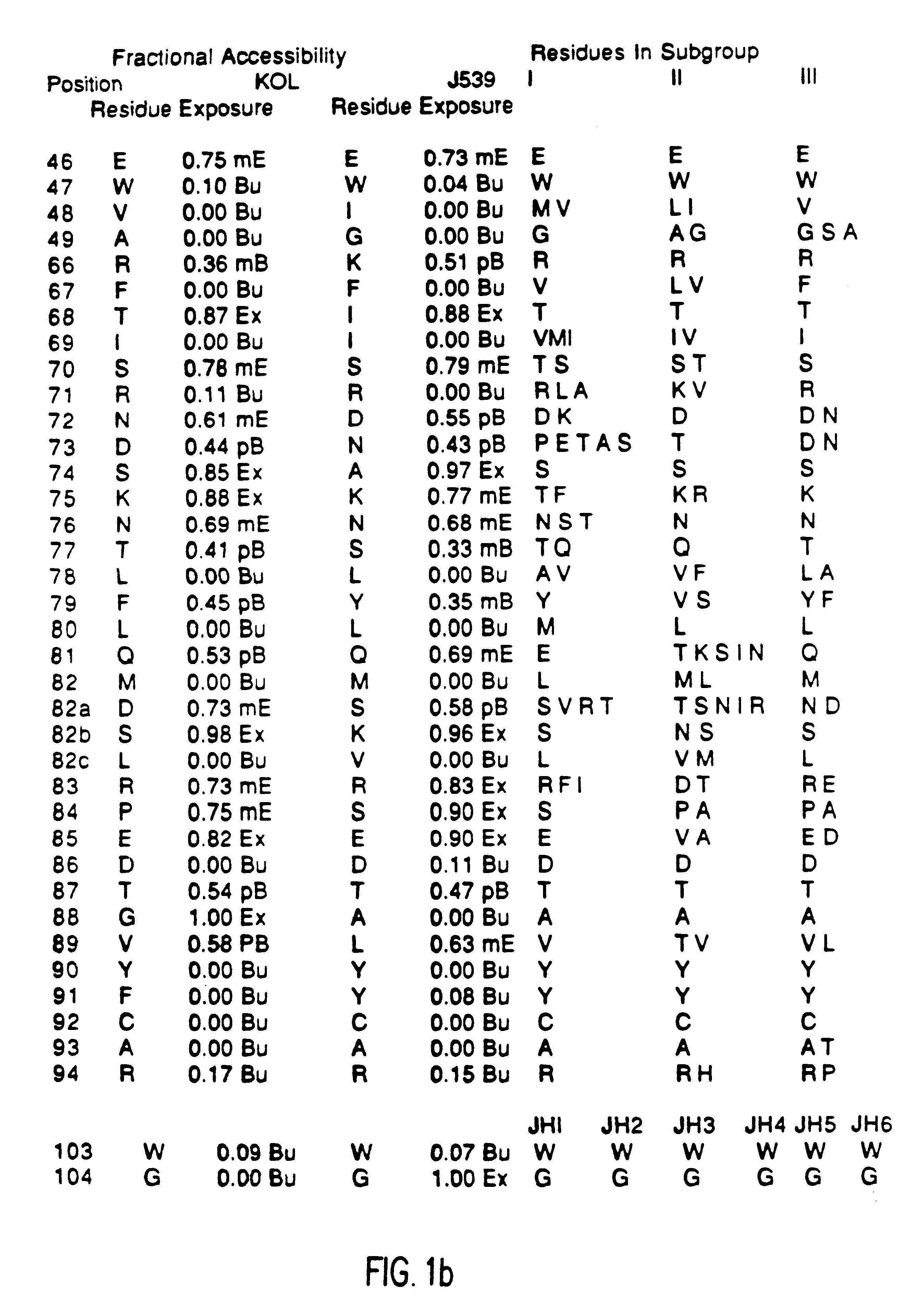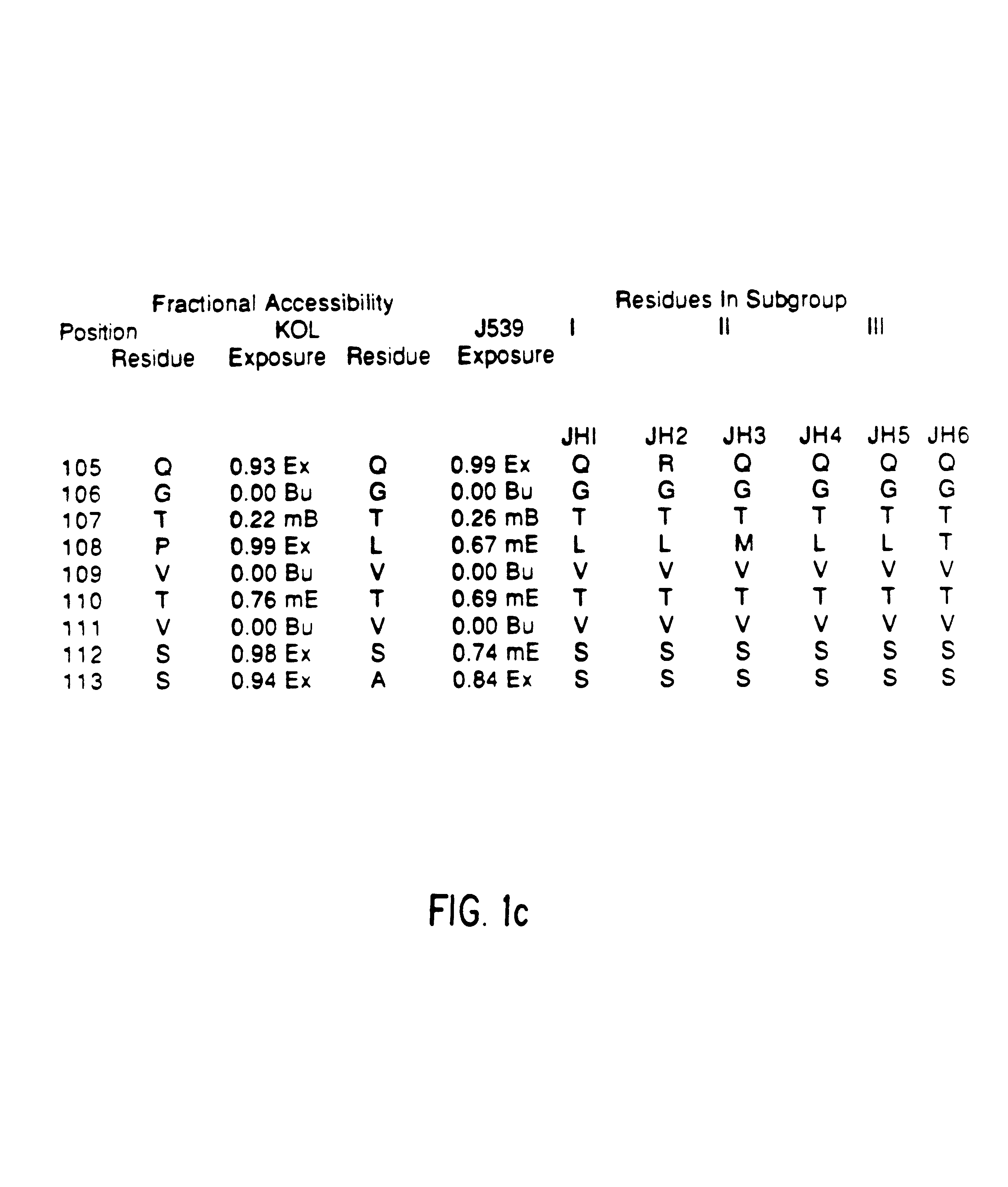Method for reducing the immunogenicity of antibody variable domains
a variable domain and antibody technology, applied in the field of reducing the immunogenicity of antibody variable domains, can solve the problems of inability to maintain long-term cultures of cells which produce sufficient quantities of antibodies, poor immunogenicity, if at all,
- Summary
- Abstract
- Description
- Claims
- Application Information
AI Technical Summary
Benefits of technology
Problems solved by technology
Method used
Image
Examples
example 2
Immunogenicity of a Veneered Murine Antibody Molecule
Human MAbs have been found to have the same pharmacokinetics in Rhesus monkeys as they do in humans. After repeated dosing of human MAbs into these monkeys they were well tolerated and rarely resulted in immune recognition. Groups of three Rhesus monkeys were injected, at weekly intervals, for five weeks with one milligram of MAb (either murine, CDR-grafted, Hemi-chimeric, or Veneered) per kilogram body weight. At various times following each injection the level of circulating MAb and the development of anti-MAb antibodies were assayed by ELISAs. The IB4 MAbs all bound their CD18 target on Rhesus PMNs and serum half-lives were initially about three to four hours. This value predominantly reflects the normal rapid turnover rate of the PMN population. Differences between the humanized versions of IB4 and its murine predecessor were appreciated by the third dose of antibody when two of the three monkeys receiving the murine antibody ...
PUM
| Property | Measurement | Unit |
|---|---|---|
| pH | aaaaa | aaaaa |
| concentrations | aaaaa | aaaaa |
| pH | aaaaa | aaaaa |
Abstract
Description
Claims
Application Information
 Login to View More
Login to View More - R&D
- Intellectual Property
- Life Sciences
- Materials
- Tech Scout
- Unparalleled Data Quality
- Higher Quality Content
- 60% Fewer Hallucinations
Browse by: Latest US Patents, China's latest patents, Technical Efficacy Thesaurus, Application Domain, Technology Topic, Popular Technical Reports.
© 2025 PatSnap. All rights reserved.Legal|Privacy policy|Modern Slavery Act Transparency Statement|Sitemap|About US| Contact US: help@patsnap.com



